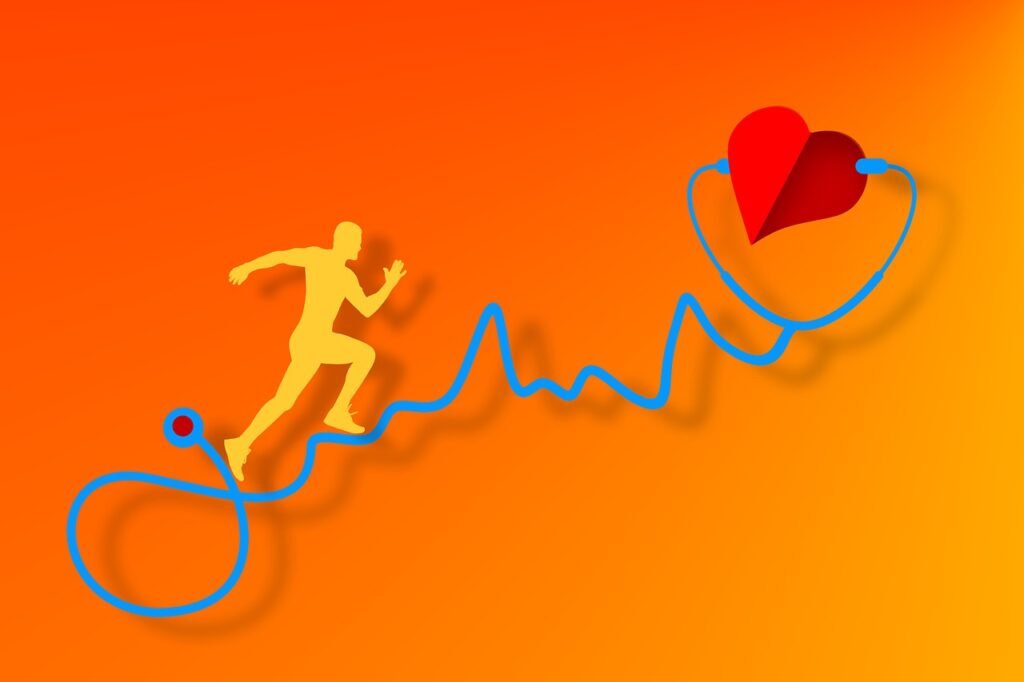
If You Have Not Heard of HIIT – You Need to Read This Blog Post!
Are you looking for a way to rapidly improve your cardiovascular health and torch calories in the most effective manner possible? If so, High-Intensity Interval Training (HIIT) may be the perfect solution for you! HIIT is a form of exercise that involves short bursts of intense activity followed by periods of rest or lower intensity exercise. Studies have found that HIIT can bring numerous benefits to your cardiovascular health, including improved VO2 max, improved blood pressure and lipid profiles, and an enhanced ability to burn calories and fat. Besides these remarkable health benefits, HIIT also offers great flexibility due to its short duration and can fit easily into any busy lifestyle.
1- Introduction to High Intensity Interval Training (HIIT)
High intensity interval training, or HIIT, is a type of cardiovascular exercise that involves short bursts of intense activity followed by periods of rest or lower intensity exercise. Studies have shown that HIIT can provide numerous benefits for cardiovascular health.
One key benefit is improved cardiovascular fitness, as HIIT has been shown to increase VO2 max, a measure of the body’s ability to utilize oxygen during exercise. Additionally, HIIT can improve blood pressure, insulin sensitivity, and lipid profiles, all of which are important markers of cardiovascular health.
HIIT can also lead to greater calorie burn and fat loss compared to traditional steady-state cardio exercise.
The short duration and flexibility of HIIT workouts make it a practical and time-efficient option for those looking to improve their cardiovascular health.
Overall, incorporating HIIT into your exercise routine can provide numerous benefits for heart health and overall wellness.
If you’re looking to add some high intensity interval training to your current exercise routine, make sure to check out our top 10 tips for incorporating HIIT into your workout.
2- The Importance of Cardiovascular Health
According to the Centers for Disease Control and Prevention (CDC), cardiovascular disease is the number one cause of death in the United States.
Cardiovascular disease is a broad term that includes conditions such as heart disease, stroke, and peripheral artery disease.
Each year, cardiovascular disease causes more than 1.5 million deaths in the United States.
Cardiovascular disease is the leading cause of death in women and the second leading cause of death in men.
The good news is that cardiovascular disease can be prevented through lifestyle changes, such as a healthy diet and adequate exercise.
One important type of exercise that can be beneficial for cardiovascular health is high-intensity interval training (HIIT).
HIIT is a type of cardiovascular exercise that involves short bursts of intense activity followed by periods of rest or lower intensity exercise.
Studies have shown that HIIT can provide numerous benefits for cardiovascular health.
One key benefit is improved cardiovascular fitness, as HIIT has been shown to increase VO2 max, a measure of the body’s ability to utilize oxygen during exercise.
Additionally, HIIT can improve blood pressure, insulin sensitivity, and lipid profiles, all of which are important markers of cardiovascular health. HIIT can also lead to greater calorie burn and fat loss compared to traditional steady-state cardio exercise.
3- Understanding HIIT Workout
If you’re looking for a cardiovascular exercise that can provide numerous benefits for your heart health and overall wellness, high intensity interval training (HIIT) is a great option to consider.
HIIT is a type of cardiovascular exercise that involves short bursts of intense activity followed by periods of rest or lower intensity exercise.
Studies have shown that HIIT can provide numerous benefits for cardiovascular health, including improved cardiovascular fitness, increased VO2 max, improved blood pressure, insulin sensitivity, and lipid profiles.
Additionally, HIIT can lead to greater calorie burn and fat loss compared to traditional steady-state cardio exercise.
HIIT workouts are short-term and can be adapted to your schedule, making it a practical and time-efficient option for improving cardiovascular health.
4- The Benefits of HIIT for Cardiovascular Health
HIIT is a type of cardiovascular exercise that has a lot of benefits for heart health.
One of the key benefits is improved cardiovascular fitness, which can lead to greater calorie burn and fat loss.
Additionally, HIIT can improve blood pressure, insulin sensitivity, and lipid profiles, all of which are important markers of cardiovascular health.
HIIT can also lead to greater cardiovascular health than traditional steady-state cardio exercise.
HIIT workouts are short-term and can be done quickly, making them an ideal choice for people looking to improve their cardiovascular health.
5- Recent Study on HIIT Workouts
Recent studies have shown that high-intensity interval training (HIIT) workouts are an effective way to improve cardiovascular health.
One key benefit of HIIT workouts is improved cardiovascular fitness.
HIIT has been shown to increase VO2 max, a measure of the body’s ability to utilize oxygen during exercise. Additionally, HIIT can improve blood pressure, insulin sensitivity, and lipid profiles, all of which are important markers of cardiovascular health.
HIIT can also lead to greater calorie burn and fat loss compared to traditional steady-state cardio exercise.
The short duration and flexibility of HIIT workouts make it a practical and time-efficient option for those looking to improve their cardiovascular health.
Overall, incorporating HIIT into your exercise routine can provide numerous benefits for heart health and overall wellness.
6- How to Incorporate HIIT into Your Exercise Program
If you’re looking to improve your cardiovascular health, high intensity interval training (HIIT) is a great option to consider.
HIIT involves short bursts of intense activity followed by periods of rest or lower intensity exercise.
Studies have shown that HIIT can provide numerous benefits for cardiovascular health, including improved cardiovascular fitness, increased VO2 max, increased blood pressure, insulin sensitivity, and improved lipid profiles.
Additionally, HIIT can lead to greater calorie burn and fat loss compared to traditional steady-state cardio exercise.
HIIT workouts are short and flexible, making them a practical and time-efficient option for those looking to improve their cardiovascular health.
7- Key Considerations for HIIT Workouts
HIIT workouts can be a great way to improve your cardiovascular health and fitness. However, making the most of HIIT workouts requires knowing what to consider. Here are seven key considerations for HIIT workouts:
1. Choose the right type of HIIT workout. There are a variety of types of HIIT workouts you can do, including sprints, Tabata reps, Jumping jacks, Burpees, High knees, Mountain climbers, Jump squats, Bicycle crunches, Box jumps, Jump rope intervals, Plyometric lunges, Push-ups, Rowing intervals, Battle ropes, Kettlebell swings, Step-ups with knee raise, and continuous cycling. It’s important to find a HIIT workout that is challenging but still manageable.
2. Choose the right intensity. HIIT workouts should be performed at an intensity that is challenging but still manageable.
3. Make sure to warm up and cool down. Prior to starting a HIIT workout, warm up by stretching and doing some light cardio. After the workout, cool down by stretching and doing some light cardio.
4. Drink plenty of water. It is important to drink plenty of water while doing HIIT workouts, especially if you are working at an intense intensity.
5. Get adequate rest. Make sure to get enough rest after doing HIIT workouts.
6. Avoid overtraining. HIIT workouts can be a great way to increase your fitness, but make sure to avoid overtraining.
7. Progress gradually.Begin by doing shorter HIIT workouts and gradually work your way up to longer and more intense HIIT workouts.
By following these seven key considerations, you can make the most of your HIIT workouts and improve your cardiovascular health and fitness.
8- Overview of HIIT
In this article, we’ve covered seven important insights about high intensity interval training (HIIT).
First and foremost, HIIT is a type of cardiovascular exercise that involves short bursts of intense activity followed by periods of rest or lower intensity exercise.
Studies have shown that HIIT can provide numerous benefits for cardiovascular health, including improved cardiovascular fitness, increased VO2 max, better blood pressure, insulin sensitivity, and lipid profiles.
Additionally, HIIT can lead to greater calorie burn and fat loss compared to traditional steady-state cardio exercise.
Due to its short duration and flexibility, HIIT workouts are a practical and time-efficient option for those looking to improve their cardiovascular health. Overall, incorporating HIIT into your exercise routine can provide numerous benefits for heart health and overall wellness.
Conclusion
In conclusion, High-Intensity Interval Training (HIIT) is a highly effective form of cardiovascular exercise that can provide numerous benefits for your heart health and overall wellness. With improved cardiovascular fitness, blood pressure, insulin sensitivity, and lipid profiles, HIIT can lead to great improvements in your cardiovascular health. Additionally, HIIT can give you greater calorie burn and fat loss compared to traditional steady-state cardio exercise. So, why not add some high-intensity intervals to your exercise routine today and experience the heart benefits of HIIT? Don’t wait, start today and reap the rewards!










1 Comment